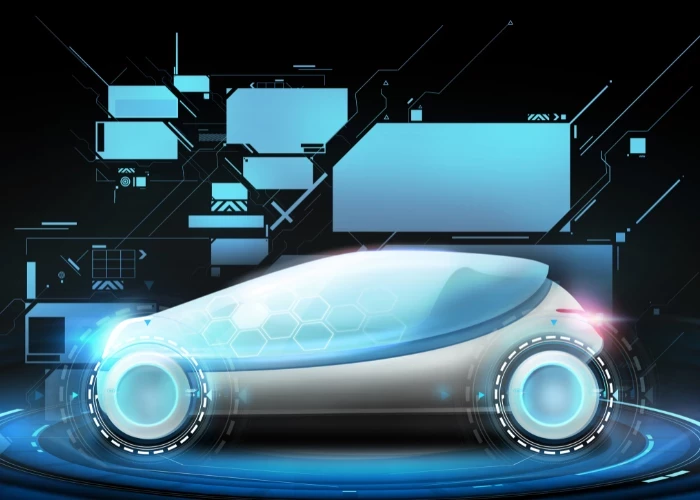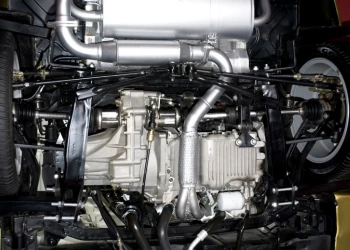How Can We Understand the Automotive Customer Journey Today?
Boosting customer satisfaction, loyalty, and long-term growth.
Add bookmark
Understanding the Automotive Customer Journey
The automotive industry is undergoing a profound transformation, driven by emerging technologies that are reshaping how we interact with vehicles. Central to this shift is the evolving automotive customer journey, a complex process influenced by factors like AI and electric vehicles.
For entrepreneurs in the automotive space, understanding this journey is key to boosting customer satisfaction and driving innovation. This article will explore the role of emerging technologies, the changing sales funnel, post-purchase engagement, and what the future holds for automotive customer experience.
What is the Evolving Landscape of the Automotive Customer Journey?
The automotive customer journey is no longer linear. Today, it spans multiple touchpoints across digital and physical channels. Consumers increasingly research vehicles online before visiting dealerships, often comparing options independently. Recent surveys show that 81% of car buyers use the internet for research before visiting a dealership, indicating a growing reliance on digital touchpoints.
This shift has empowered consumers, who now arrive at dealerships better informed with specific expectations, transforming the traditional sales process. Virtual showrooms and online configurators are essential tools, allowing customers to visualise their choices digitally.
The sales funnel has become more dynamic and personalised, with buyers engaging with brands across various platforms. To stay competitive, automotive companies must integrate digital channels seamlessly and ensure consistent customer experiences.
Social media and peer reviews also play a key role in shaping consumer decisions, from initial research to final purchase. Understanding these factors is crucial for automotive brands aiming to meet modern consumer expectations.
What Emerging Technologies are Shaping the Automotive Customer Journey?
Emerging technologies are transforming every aspect of the automotive customer journey, creating smarter, more connected experiences. These advancements are reshaping not just how cars are built and sold, but how customers engage with automotive brands.
AI is leading the charge, offering personalised experiences that cater to individual preferences and enhance satisfaction. Additionally, AI-driven analytics provide valuable insights, enabling companies to better anticipate and meet customer needs.
Here’s how emerging technologies shape the automotive customer journey:
- AI and Personalisation
- Autonomous Driving and In-Car Experiences
- Electric Vehicles and Chaning Expectations
- Connected Cars and Real-Time Data
Autonomous driving technology is another game-changer. It promises to redefine what consumers expect from their vehicles by introducing new entertainment and productivity opportunities during travel. These developments are bound to create shifts in how customers perceive and engage with their vehicles. Statista reports that the global autonomous vehicle market is projected to reach $60 billion by 2030, further highlighting its significance in shaping future customer journeys.
Moreover, EVs are not just about alternative propulsion. EVs bring a suite of changes in ownership, charging, and maintenance expectations. These shifts require automotive companies to refine their strategies to meet evolving customer demands. According to BloombergNEF, “Electric vehicles are not just vehicles; they represent a new way of thinking about transportation and the future of energy”.
Connected cars, powered by real-time data, enable seamless interactions between vehicles and their environment, enhancing customer satisfaction. Ensuring smooth integration of these innovations into the customer journey is crucial for long-term success.
AI and Personalisation in the Customer Journey
AI is redefining the automotive experience by enabling deeply personalised interactions. Advanced algorithms can process vast amounts of data to offer tailored recommendations, such as adjusting in-car settings to match individual preferences, enhancing both comfort and convenience.
AI-powered virtual assistants are also revolutionising how customers interact with their vehicles. These assistants can execute voice commands, navigate routes, and even schedule maintenance, creating a seamless and intuitive experience. As stated by BMW, “AI assistants can reduce driver stress by 40% through improved in-car interaction”. This level of personalisation not only improves usability but also elevates customer satisfaction, making the automotive journey more engaging than ever.
Autonomous Driving and In-Car Experiences
Autonomous driving technology is paving the way for more integrated in-car experiences. With self-driving capabilities, passengers can focus on activities other than driving. This opens possibilities for entertainment, work, and relaxation during their commute.
With self-driving technology, the automotive interior could evolve into a multifunctional space, offering new service ecosystems that enhance the customer journey. A report from the International Transport Forum highlights that "autonomous vehicles could transform interiors into flexible spaces for work, social interaction, or relaxation". These changes represent a departure from traditional car experiences, creating opportunities for deeper engagement with customers.
Electric Vehicles and Changing Expectations
Electric vehicles are altering the traditional paradigms of vehicle ownership, requiring customers to rethink everything from refuelling to maintenance. As charging infrastructure becomes increasingly important, consumers now expect faster charging times and greater access to charging stations. According to the International Energy Agency (IEA), global EV sales were up by 43% in 2020, reaching 3.24 million vehicles, signalling the massive adoption of electric cars worldwide. As the IEA explains, “EVs are not only reducing emissions but are also changing the way we think about energy, mobility, and infrastructure”
Moreover, the reduced maintenance needs of EVs provide added convenience. However, the necessity of understanding battery health and longevity introduces new complexities. Manufacturers must adapt to these emerging needs to meet evolving customer expectations effectively.
Connected Cars and Real-Time Data
Connected cars deliver a continuous stream of real-time data, significantly enhancing the customer experience. Drivers stay informed with live updates on traffic, navigation, and vehicle diagnostics, improving decision-making and safety.
Additionally, this data is vital for predictive maintenance, offering timely reminders and alerts before issues arise. By preventing inconvenient breakdowns, these capabilities elevate the overall ownership experience. The seamless integration of real-time data solutions fosters greater customer satisfaction and loyalty.
Customer Satisfaction: How to Achieve the Ultimate Metric of Success
In the automotive industry, customer satisfaction is the ultimate indicator of success, encompassing every touchpoint from pre-purchase research to post-purchase engagement. High satisfaction leads to customer retention and brand loyalty - key drivers of long-term growth. Notably, a study by Marque Group Solutions revealed that 77% of customers who rated their service experience highly (9 or 10 out of 10) at a franchise dealership returned for subsequent services, compared to just 52% retention among less satisfied customers.
Improving satisfaction involves optimising the entire customer journey, addressing pain points, and consistently exceeding expectations. As products and services evolve, prioritising exceptional experiences becomes essential.
Moreover, customer satisfaction fuels positive word-of-mouth and enhances brand perception. Satisfied customers become advocates, sharing their positive experiences with others. Achieving high satisfaction isn’t just a goal - it’s an ongoing commitment that strengthens a brand’s reputation over time.
How Can I Measure and Improve Customer Satisfaction?
Accurately measuring customer satisfaction requires a balance of quantitative and qualitative methods. Surveys, feedback forms, and online reviews provide valuable insights into customer opinions and experiences, helping identify both areas for improvement and successful strategies.
To enhance satisfaction, automotive companies must act based on this feedback. Personalising the customer journey and ensuring a seamless omnichannel experience are key strategies. Building responsive systems that address customer needs promptly fosters trust and boosts overall satisfaction.
How Does Digital Transformation Work in Automotive Sales?
The automotive sales funnel is undergoing a major shift, driven by digital technology. This transformation moves away from traditional, linear purchasing paths to more dynamic, multi-stage customer journeys. Today’s automotive customer journey includes multiple digital touchpoints that play a crucial role in shaping consumer decisions. According to Deloitte, 60% of customers complete their car-buying journey with at least one digital interaction, even if they ultimately buy in person
Digital platforms enable customers to engage with brands earlier and more frequently, from initial research to final purchase. As a result, automotive companies must rethink their strategies. Key transformations include:
- Virtual showrooms for immersive experiences
- AI-driven personalised recommendations and communications
- Seamless transitions between online and offline channels
- Data analytics to better understand customer behaviour
These changes aim to create a streamlined and satisfying automotive customer journey. To remain competitive, companies must adapt and innovate continuously. Embracing digital advancements is no longer optional but essential for capturing the attention and loyalty of tech-savvy consumers.
Online Research and Virtual Showrooms
Consumers today begin their automotive journey online, using search engines and brand websites extensively for research. This early engagement is critical, making accessible and comprehensive online content essential.
Virtual showrooms offer an enhanced experience. By enabling 360-degree vehicle views and interactive features, they replicate the in-dealership experience. Customers can explore features, customise options, and even visualise cars in different colours. These innovative platforms attract interest and streamline the decision-making process.
Social Media Influence and Peer Reviews
Social media has reshaped how consumers perceive and engage with automotive brands. Platforms like Instagram, Facebook, and Twitter serve as key channels for sharing information and opinions. Automakers leverage these platforms to launch new products and connect with audiences.
Peer reviews also have significant influence. Potential buyers seek out reviews from existing customers to make informed decisions. Positive reviews boost customer confidence and brand image, while negative ones provide learning opportunities. Engaging with customers on social media and encouraging feedback helps build a positive online presence.
The Importance of Test Drives and Dealership Experiences
Despite digital advancements, test drives and dealership visits remain crucial. They offer tangible experiences that cannot be replaced by online interactions. A 2024 survey by EY found that 66% of consumers prefer to physically experience a car at a dealership before purchasing, highlighting the enduring importance of in-person interactions. Experiencing a vehicle first-hand provides insights into handling, comfort, and features.
Dealerships continue to play a pivotal role in finalizing purchases. A welcoming and knowledgeable environment can sway decisions and build customer trust. Sales personnel enhance the customer journey by providing personalized assistance and addressing queries effectively. The key is blending digital convenience with personal interaction is key to a holistic customer experience.
How to Maintain Post-Purchase Engagement and Customer Retention
Maintaining customer engagement after the sale is vital for long-term retention. This phase focuses on nurturing lasting relationships that encourage repeat business. Providing exceptional service and support ensures customers remain satisfied and loyal.
Effective post-purchase engagement relies on consistent communication, including regular updates, personalised offers, and proactive outreach. This approach demonstrates the brand’s commitment beyond the initial sale, helping to foster loyalty.
Customer feedback loops play a key role in refining post-purchase strategies. By listening to customers and acting on their input, brands can enhance the overall customer journey and build stronger connections. A study by Bain & Company found that increasing customer retention rates by 5% increases profits by 25% to 95%.
Maintenance, Services, and Customer Support
Timely maintenance and high-quality service are essential for keeping vehicles in optimal condition, directly impacting customer satisfaction. Reliable customer support ensures any issues are swiftly addressed, strengthening trust and loyalty.
Automakers can leverage predictive analytics to forecast maintenance needs, minimising downtime and enhancing customer convenience. A smooth service experience, coupled with responsive support, reinforces positive brand perception and boosts retention rates.
Subscription Models and Mobility-as-a-Service (MaaS)
Subscription models are gaining traction for their flexibility and convenience. These models allow customers to access vehicles without the long-term commitment of ownership, aligning with the demands of modern urban lifestyles. According to Automotive World, “Consumers increasingly demand more flexible, usage-based models that allow them to access vehicles without the long-term commitment of ownership.”
Mobility-as-a-Service (MaaS) is further transforming vehicle access by integrating various transportation options into a single, user-centric platform. By focusing on ease of use and accessibility, MaaS meets evolving consumer needs, reflecting a broader shift toward more flexible, customer-focused solutions in the automotive industry. A report by Frost & Sullivan estimates that the global MaaS market is expected to grow to $220 billion by 2030, signalling a significant shift toward service-oriented mobility.
What is the Future of the Automotive Customer Journey?
The future of the automotive customer journey is poised for transformation. Technological advancements will redefine customer experiences and expectations in profound ways. Businesses that embrace these changes stand to gain a competitive edge.
Predictive analytics will play a central role in this evolution. By anticipating customer needs, companies can tailor offerings and improve satisfaction. This approach enables more personalised and efficient interactions, fostering stronger customer relationships.
Omnichannel experiences will be crucial in meeting customer demands. A seamless transition across digital and physical channels ensures consistency. Customers will increasingly expect unified, engaging interactions at every touchpoint, necessitating cohesive strategies from automotive brands.
Furthermore, regulatory changes and environmental concerns will heavily influence future strategies. Companies will need to adapt to shifting policies and societal priorities. Embracing sustainability and ethical practices will be key to aligning with consumer values and securing long-term success.
Predictive Analytics and Anticipating Automotive Customer Needs
Predictive analytics empowers businesses to foresee customer behaviour and trends. By leveraging data insights, companies can anticipate needs and deliver tailored solutions. This proactive approach enhances customer satisfaction and loyalty.
In the automotive sector, predictive analytics optimises vehicle maintenance, personalises marketing efforts, and refines service offerings. According to Tech Burner, it also enhances demand forecasting, customer segmentation, and inventory management, leading to optimised operations and personalised shopping experiences. Similarly, in marketing, businesses leverage predictive models to tailor messages to individual preferences, increasing engagement and conversion rates. Businesses that harness this technology will be better positioned to meet changing consumer expectations.
The Importance of Omnichannel Experiences in Automotive
Omnichannel experiences provide a consistent and cohesive customer journey. Whether online or in-store, customers expect the same level of engagement and service. Brands must strive to unify their channels for seamless interactions.
In the evolving automotive landscape, an integrated approach is essential. It helps maintain brand loyalty, enhances user experiences, and builds trust. By prioritising omnichannel strategies, businesses can ensure customer satisfaction across all interaction points.
How to Adapt to Regulatory Changes and Environmental Concerns
Regulatory changes and environmental concerns are reshaping the automotive industry. Environmental sustainability is becoming a focal point for consumers. In the UK, for instance, nearly 382,000 new electric cars were sold in 2024, marking a 21.4% increase from 2023 and representing 19.6% of all new car sales. Compliance with new policies is crucial for sustainable business practices. Companies must stay informed and agile to address these evolving requirements.
Environmental sustainability is becoming a focal point for consumers. Brands that integrate eco-friendly practices into their operations can attract and retain customers. Adapting to these shifts will be key in aligning with consumer values and securing future growth.
Conclusion: How Can We Drive Forward with a Customer-Centric Approach?
The automotive customer journey is increasingly dynamic and complex. Emerging technologies, from AI to electric vehicles, are reshaping how customers interact with brands. Entrepreneurs must prioritise a customer-centric approach to navigate this changing landscape.
By focusing on personalisation and leveraging data analytics, businesses can enhance customer satisfaction. Anticipating consumer needs and incorporating feedback are key strategies. As the industry evolves, remaining agile and adaptable will be vital in maintaining competitiveness.
Ultimately, adopting a customer-first mentality will drive success. Embracing innovation with empathy and understanding will ensure that automotive companies stay ahead. This approach not only meets today's demands but also prepares for tomorrow's opportunities.





















